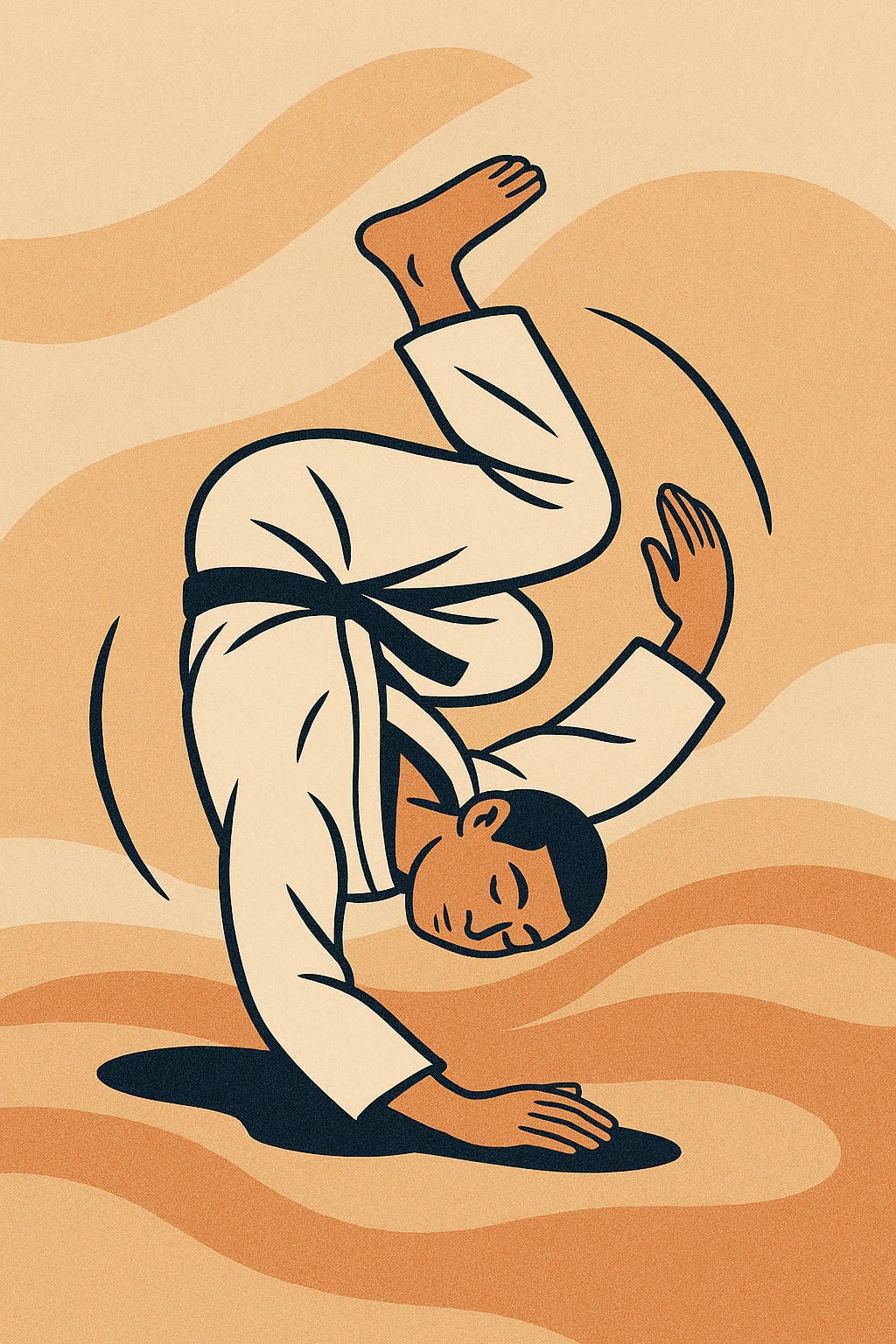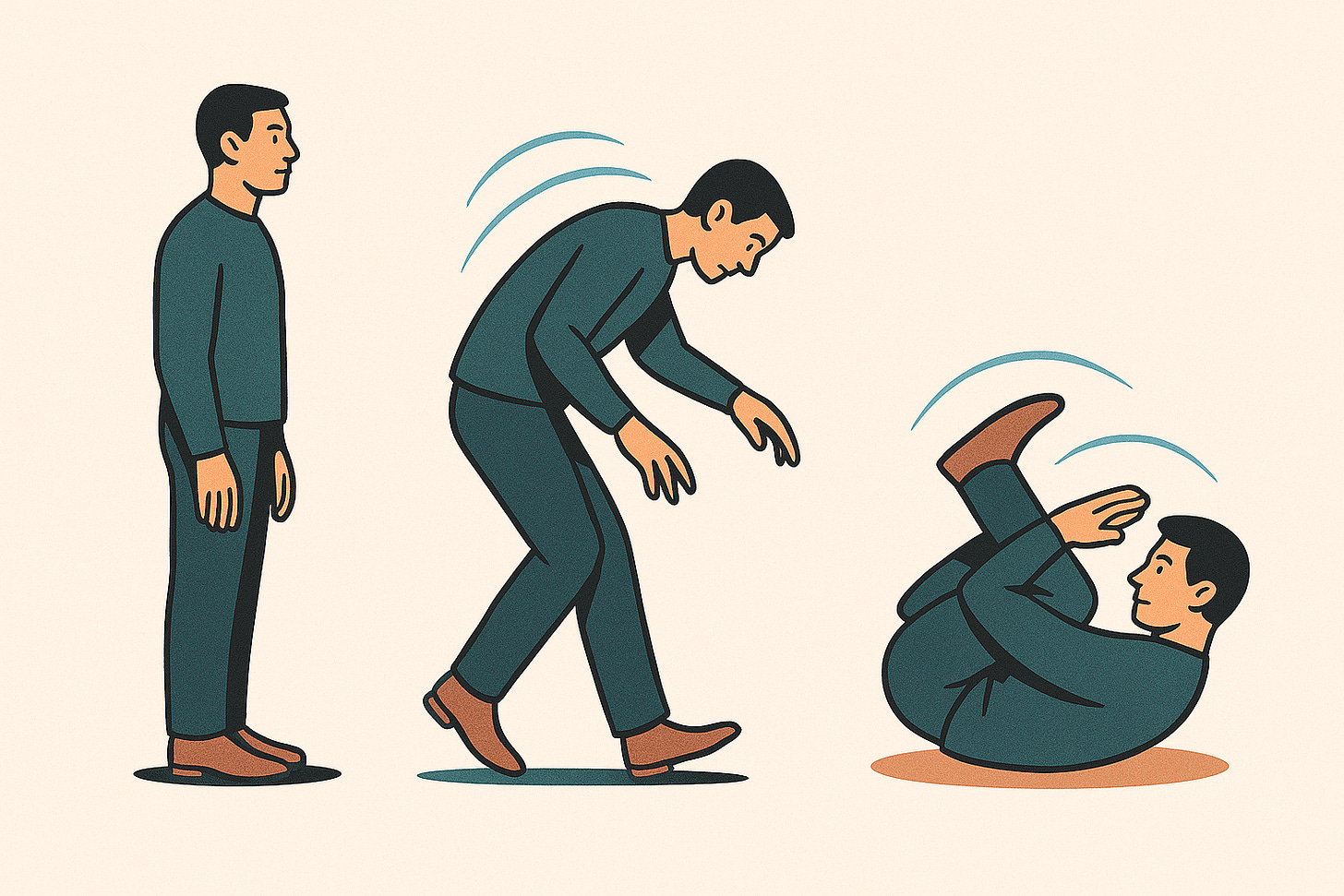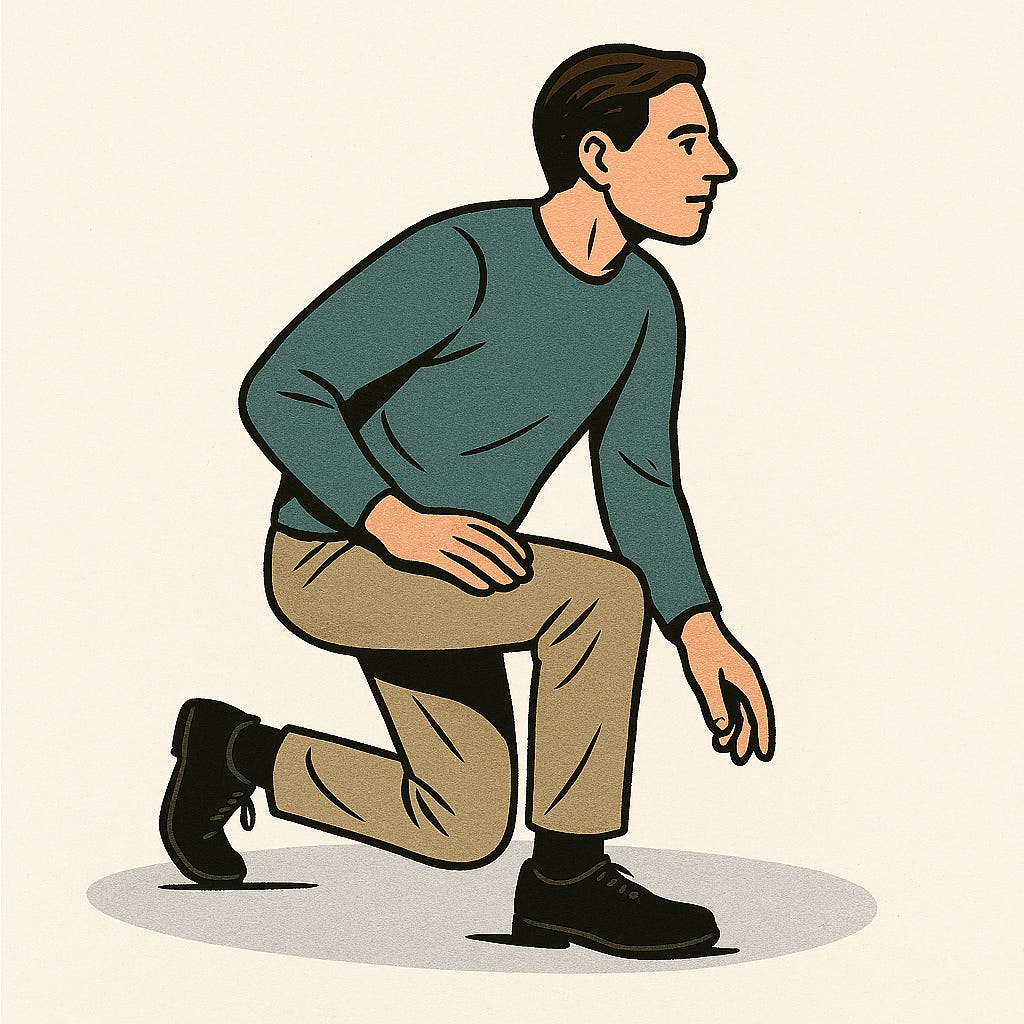Strong Enough to Fall
The Skill You’ve Never Practiced That Could Save Your Life in Seconds
The Ground Is Undefeated
The ground is undefeated.
I learned that lesson as a firefighter. In training, we practiced bailout drills: dropping from windows, sliding down ladders, breaching walls or floors. The point wasn’t to avoid falling, it was to learn how to fall in a way that gave us the best chance of getting back up.
The same training principles apply in martial arts. Students spend hours practicing how to fall — rolling, tucking, spreading impact — because they know the fall is inevitable. The skill is in surviving it.
Outside of firefighting, martial arts, or gymnastics, almost no one teaches this. And yet, for older adults, athletes, and everyday people, learning how to fall safely could mean the difference between a bruised ego and a broken hip.
The Science of Falling
Falls aren’t all the same. The way you land often determines the injury.
Forward falls often lead to wrist and arm fractures, as people instinctively throw their hands out.
Sideways falls are the most dangerous for hip fractures.
Backward falls carry the highest risk of head injuries, especially if protective reflexes are slow.
The problem, as we age, is that our protective reflexes — the ability to throw out a hand, tuck a chin, or roll — slow down. A landmark video study of real-life falls in nursing homes found that older adults didn't instinctively protect themselves when falling, which led to hip and head injuries. (Robinovitch et al., 2013).
And here’s a sobering truth I learned from Dr. Michael Grahl, an ER physician I’ve worked with: for adults over 65, rib fractures can be deadly. After the third rib, each additional fracture carries about a 10% mortality risk. That means someone with six broken ribs has nearly a one-in-three chance of not surviving. It’s a reminder that falls don’t just bruise — they can be life-altering or even life-ending. And it’s why learning how to fall in a way that protects your torso and spreads the impact matters so much.
Research shows fall training works. According to a study published in Osteoporosis International, martial arts–based fall training (think judo) can reduce the chances of breaking a hip during sideways falls (Groen et al., 2007).
Later studies showed that practicing judo-style falling techniques not only lowers the risk of broken bones but also helps reduce the fear of falling — a fear that can actually increase fall risk (Groen et al., 2010). And a systematic review found that structured step and fall training programs improve balance, speed up reaction time, and boost confidence, while reducing actual falls in older adults (Okubo et al., 2016).
Practical Lessons from the Mat and the Fireground
So what can you expect “fall training” to look like in real life?
Protect the head. Tuck the chin and turn the face away from impact. Even a small adjustment can mean the difference between a bruise and a brain bleed.
Spread the impact. Instead of landing on one spot, like the hip, try to roll or spread the impact across a larger area. Martial arts ‘breakfalls’ are designed to absorb energy this way.
Don’t stiffen up. A rigid body takes the full brunt of the fall. A looser body can absorb and dissipate more energy.
Practice getting up. One of the most overlooked skills is simply being able to get up from the floor safely and confidently. Many older adults who fall aren’t injured by the fall itself, but by the hours they spend on the floor afterward when they can't get up.
You don’t need to be a black belt to practice these skills. Even simple drills like practicing controlled descents onto a mat or rehearsing how to get up from the floor can build confidence and resilience. Some physical therapy and community programs are now incorporating these techniques, but they’re still far from mainstream.
Why This Matters
Spending so much time trying to prevent falls sometimes makes us forget that, despite our best efforts, we’re going to hit the ground. The question then changes from “How do I avoid falling?” to “Am I strong enough to fall and get back up?”
That little shift can replace fear with confidence, turning a fall from a catastrophe into a challenge you’re prepared for.
Reducing the fear of falling is just as important as reducing the fall itself. Fear leads to hesitation, inactivity, and loss of strength, which ironically makes falls more likely. Fall training addresses both sides of the equation, reducing the physical and the psychological impact.
The Takeaway
The ground is undefeated. But you don’t have to be.
By training your body to fall better — to protect your head, spread impact, and recover — you can turn a potentially life-altering event into something survivable.
Fall prevention isn’t just about balance; it’s about resilience.
Looking Ahead to the Next Article
We’ve talked about how to fall better. But falls don’t just break bones; they can break something much bigger. In the final article of this series, we’ll look at the hidden aftershocks of falls: how falling can shatter confidence, independence, and even family dynamics.
Closing Call-to-Action
Have you ever practiced falling in sports, martial arts, or even by accident? What did you learn from it? Share your story in the comments, or share this article with someone who needs to hear that it’s possible to be strong enough to fall.





